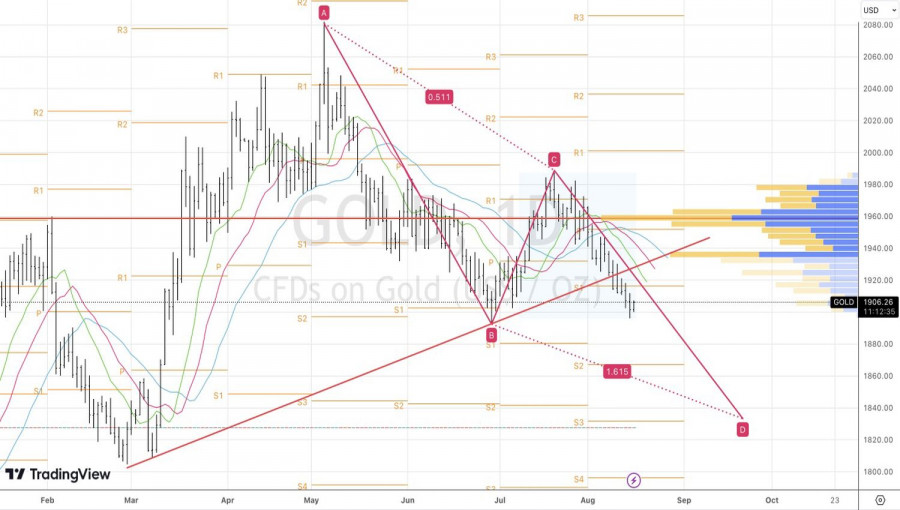
Gold has fallen in 8 out of the last 11 trading sessions due to an increasing probability of a soft landing for the U.S. economy. A remarkable surge of 0.7% in July retail sales, against a forecast of 0.4% MoM, convinced investors that American consumers are doing fine. Thanks to a strong labor market, they continue to spend money, driving GDP growth of 2.2% in the third quarter. Goldman Sachs projects this, and it is negatively perceived by the XAU/USD bulls.
Strong macroeconomic statistics allow the Federal Reserve to put aside concerns about a recession and focus on battling inflation. And the central bank is doing a good job. After a slowdown in consumer prices and producer prices, good news arrived from import prices. In July, the growth rate of this indicator fell from 6.1% to 4.4% YoY. Inflation expectations from the New York Fed are also falling. The annual indicator fell from 3.8% to 3.5% in July, three-year inflation expectations fell to 2.9%, and five-year expectations fell to 3%.
U.S. Inflation Expectations Dynamics

The Fed is doing an excellent job. The U.S. economy is stable, prompting traders to get rid of long-term Treasury bonds. Their yield is rising both nominally and in real terms, contributing to the strengthening of the US dollar and putting pressure on gold. Precious metal does not yield interest income and cannot compete with debt obligations during a period of rising interest rates. At the same time, gold is perceived as an anti-dollar, so the USD index rally is a headwind for XAU/USD.
Real Treasury Bond Yield and U.S. Dollar Dynamics

In this context, it is not surprising to see capital outflows from gold-focused ETFs and the unwinding of speculative long positions in precious metals on the futures market. Only central banks are buying it, but they always do so when XAU/USD quotes are falling. The question is, will ordinary traders have the patience and financial resources to do the same?
What could save the bulls? In my opinion, a significant deterioration in U.S. macroeconomic statistics. In this case, the U.S. dollar will lose its trump card of American exceptionalism, and falling Treasury bond yields will lead to a rise in XAU/USD quotes. Such a scenario is possible due to the most aggressive monetary tightening by the Fed in four decades. But there is another option.

The still-strong labor market and robust consumer spending reignite inflation. Instead of holding rates, the Fed resumes its rate hike cycle. The dollar and U.S. Treasury bond yields rise, and precious metal falls to $1800 an ounce.
Technically, on the gold daily chart, a trendline has been broken from above. At the same time, the bears are ready to rewrite the June low and activate the AB=CD pattern with a target at 161.8%. It corresponds to the $1832 per ounce mark. The recommendation remains the same—sell.